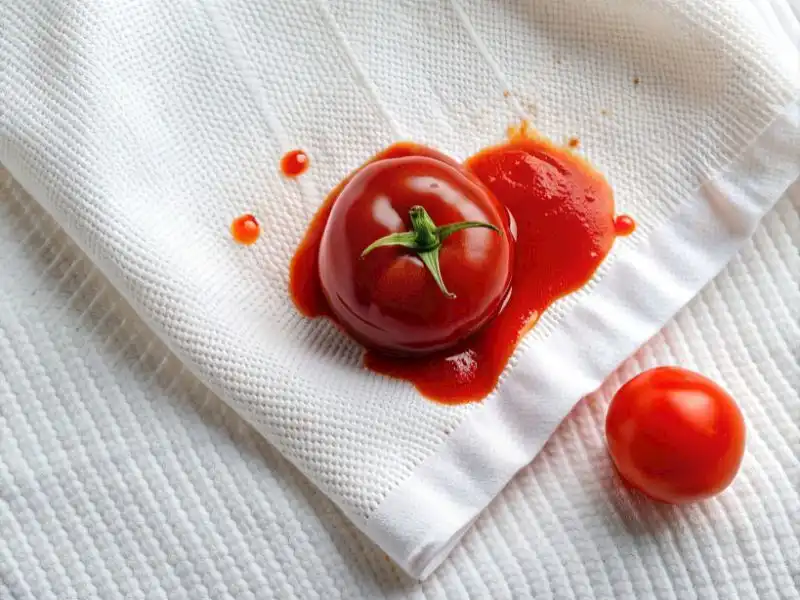
How to Remove Tomato Stains?
Tomato stains are quite striking with their vibrant red color and intense pigments. Especially the lycopene and natural sugars in tomatoes quickly penetrate the fabrics and create a stubborn stain. Such stains can penetrate deeply into the texture of the clothes and if not treated correctly, can become permanent. Tomato stains usually occur accidentally while preparing or eating food and if not noticed immediately, they dry and become even more difficult to remove. The acidic and oily components that make up the stain can affect the color of the fabric and damage it. Therefore, it is important to take the right steps and act quickly to deal with tomato stains.
Since tomato stains are both watery and intense in color by nature, care should be taken during the initial intervention. Incorrect methods can cause the stain to spread and deepen even more. Therefore, it is important to be conscious and careful when dealing with such stains. Because tomato stains can be quite annoying, especially on clothes. However, it is possible to get rid of these stubborn stains with the right methods. First of all, it is necessary to intervene as soon as possible to prevent the stain from drying. It is much easier to remove fresh stains than dried stains.
You can start by carefully removing the excess stain with a spoon or knife. However, at this stage, you should avoid rubbing the stain because rubbing can cause the stain to penetrate deeper into the fabric. Then, the stain should be held in cold water. Hot water should not be used because hot water can set the tomato stain. Cold water helps to dissolve the stain.
In the next step, you can apply Renax Liquid Matic laundry detergent to the stain and rub it gently. This process helps to dissolve the stain and separate it from the fabric. Then, you can wash the garment with the stain in the washing machine by following the instructions on the back of our product packaging and setting the washing temperature to the maximum temperature specified on the garment's label.





